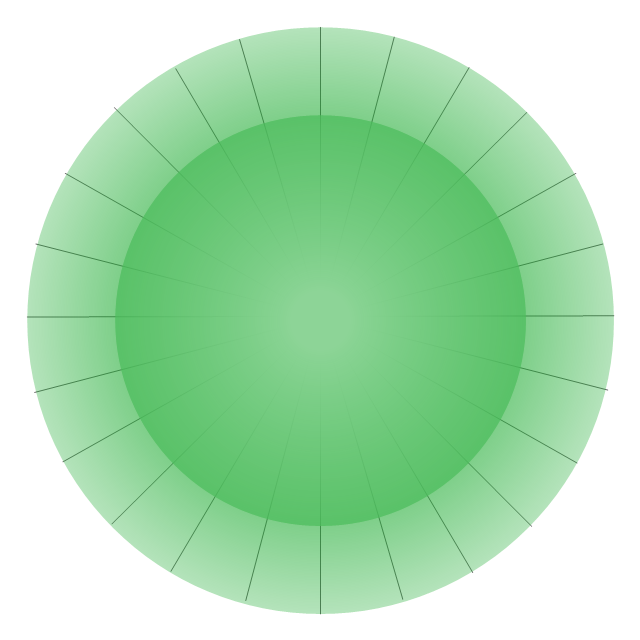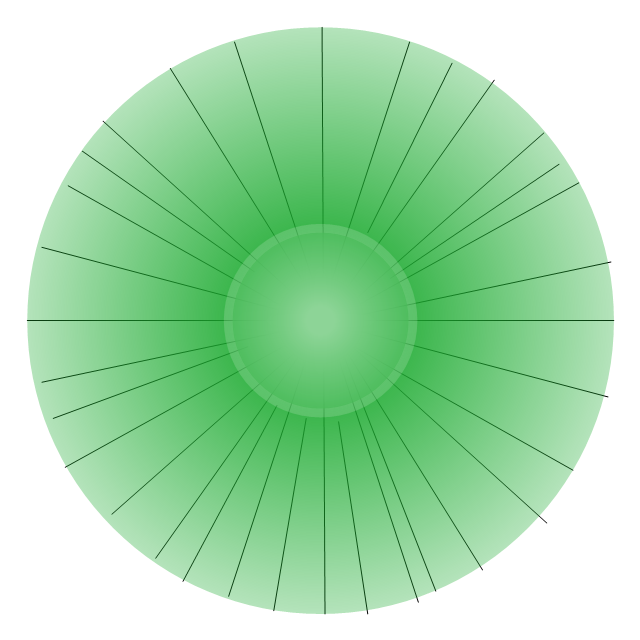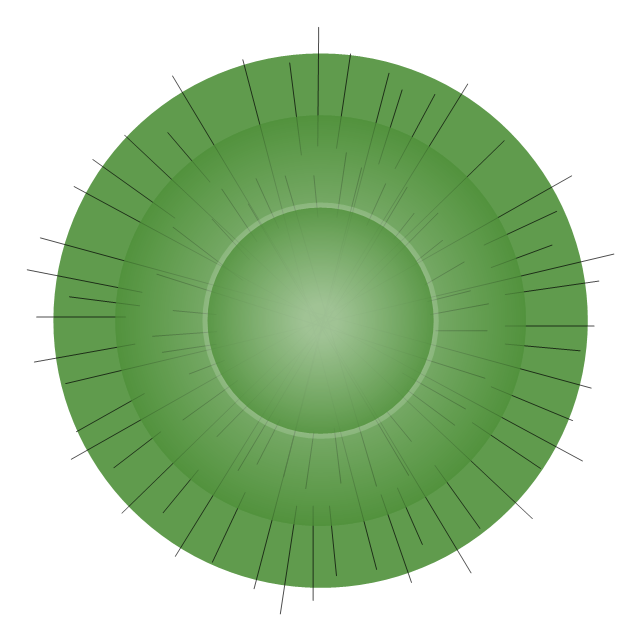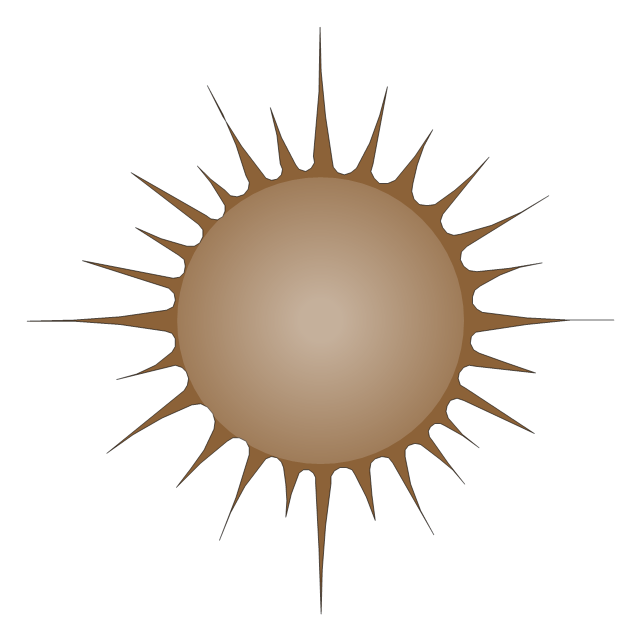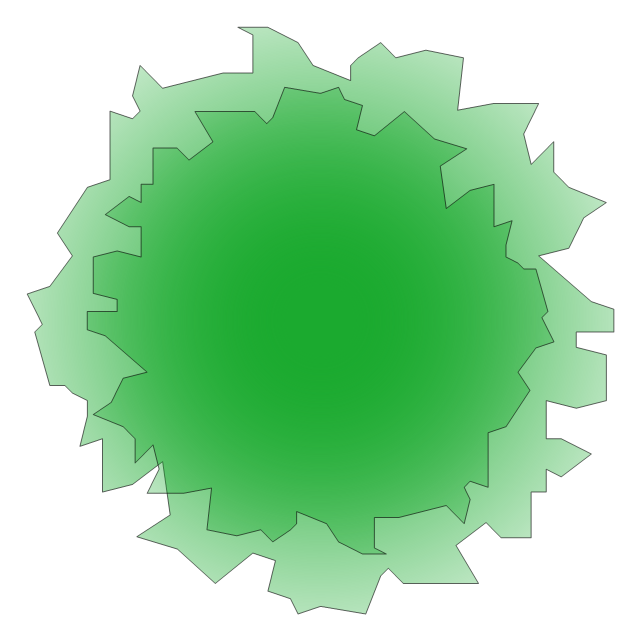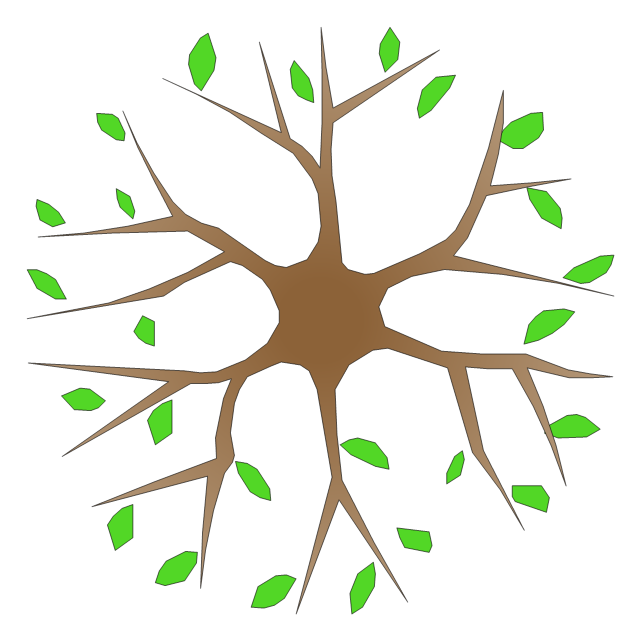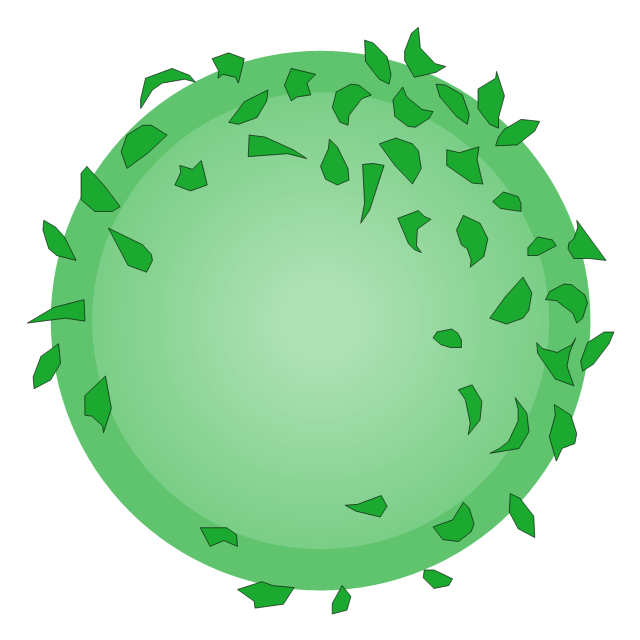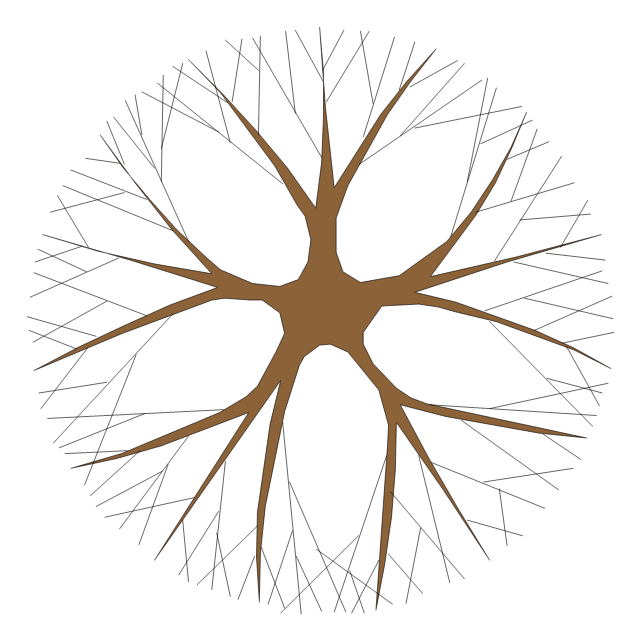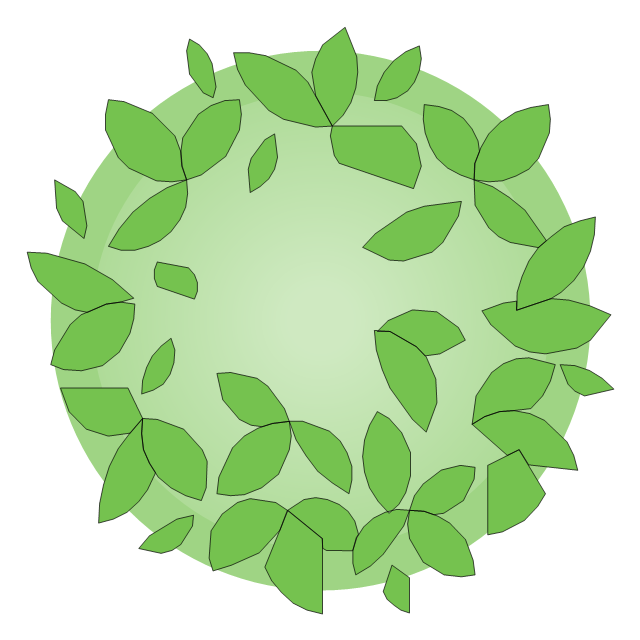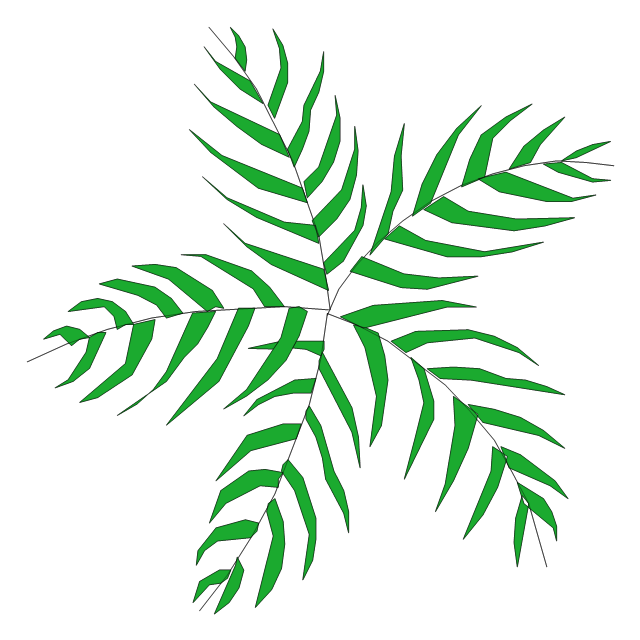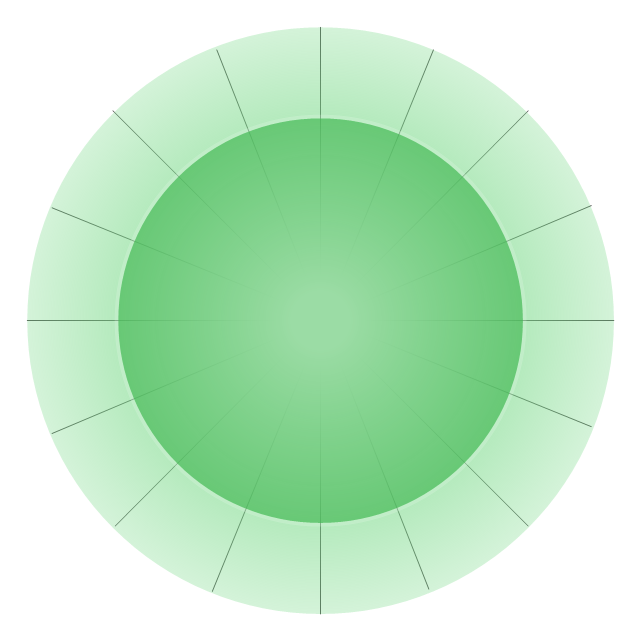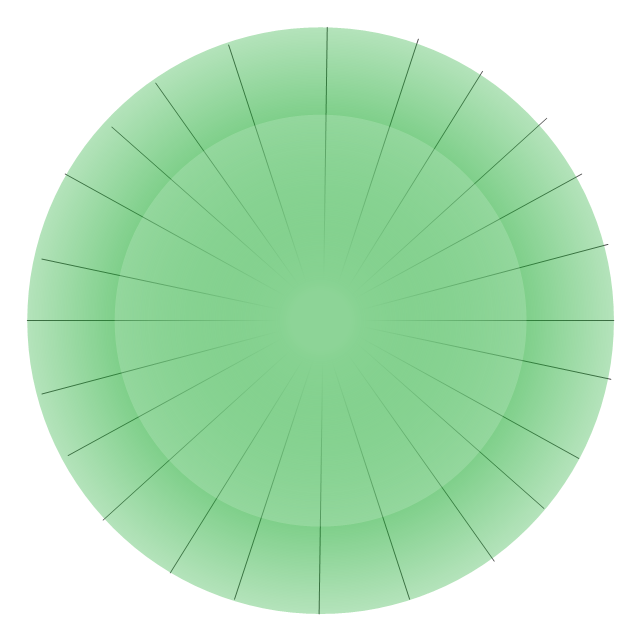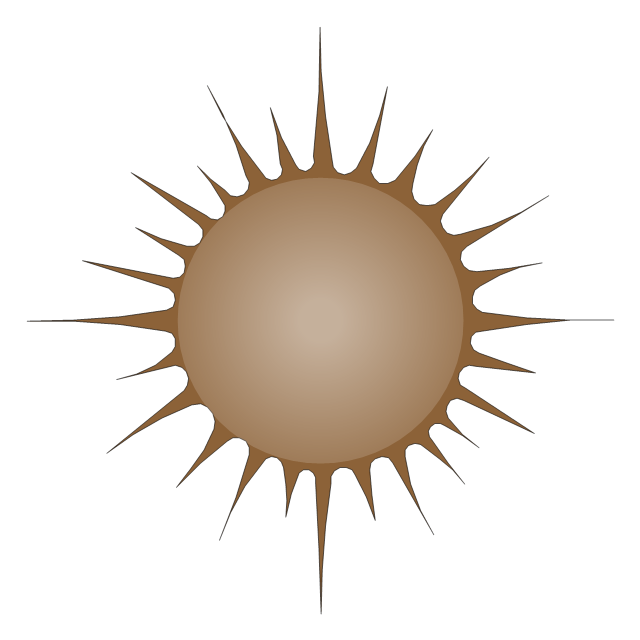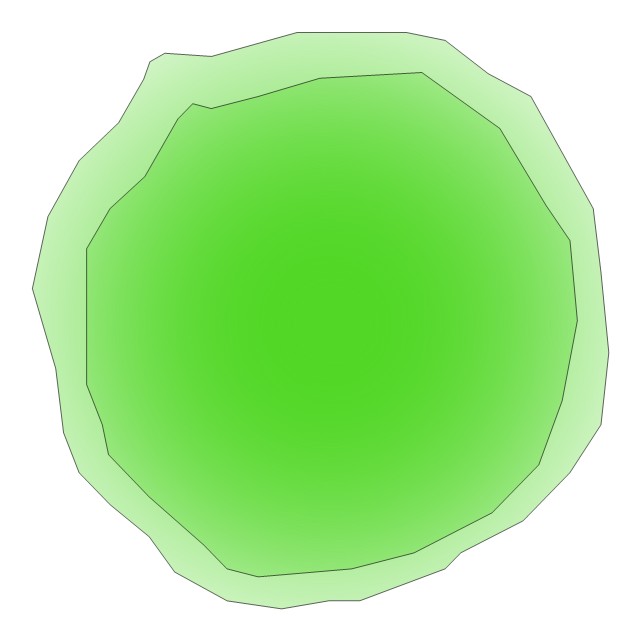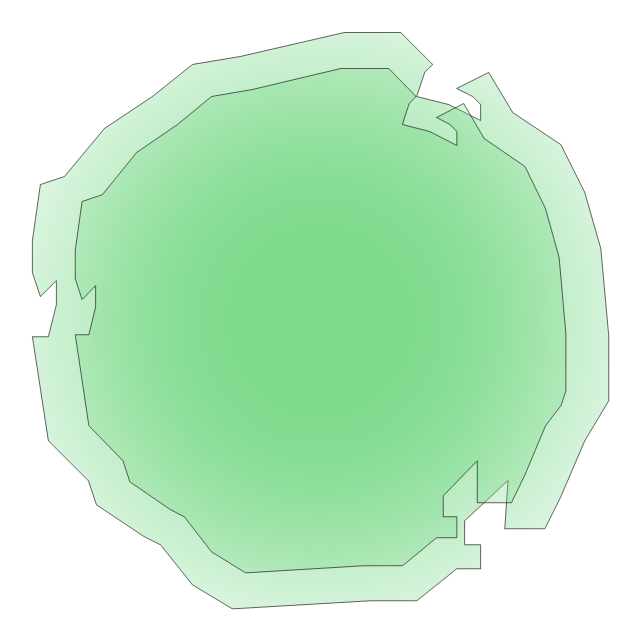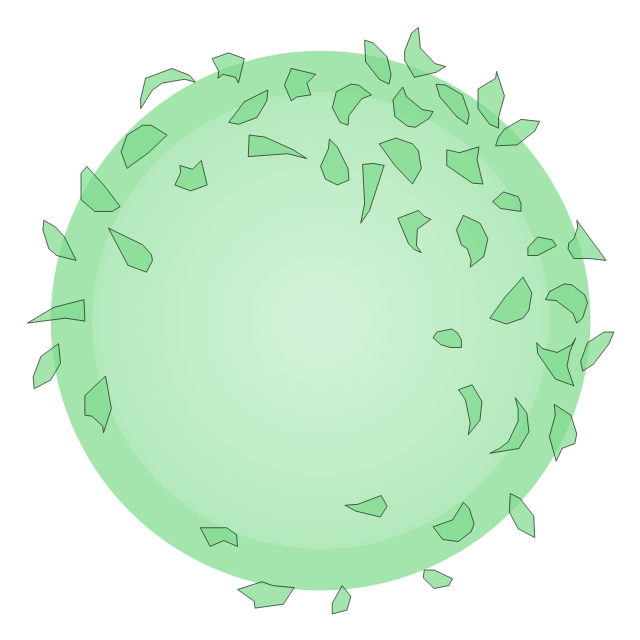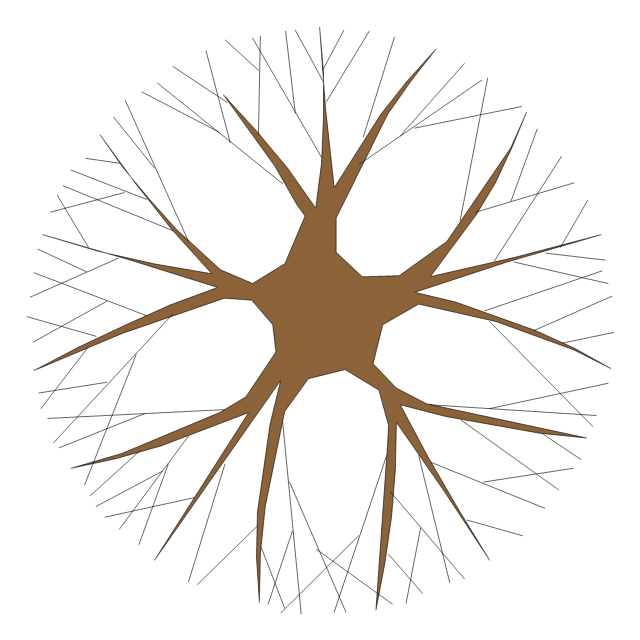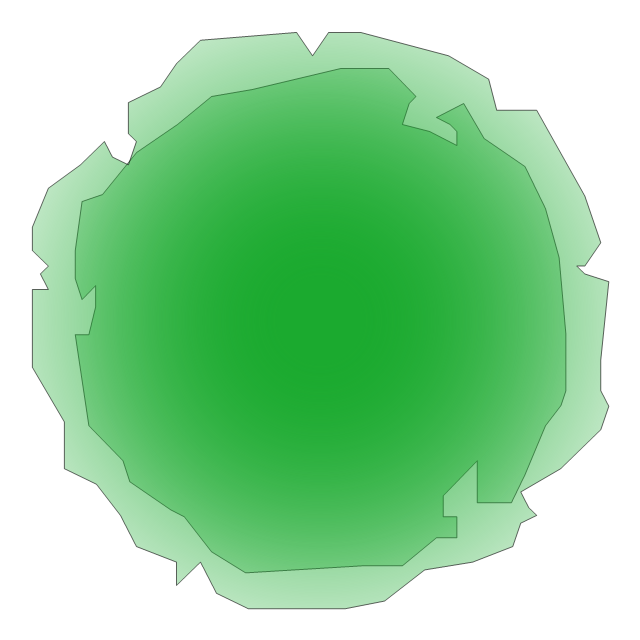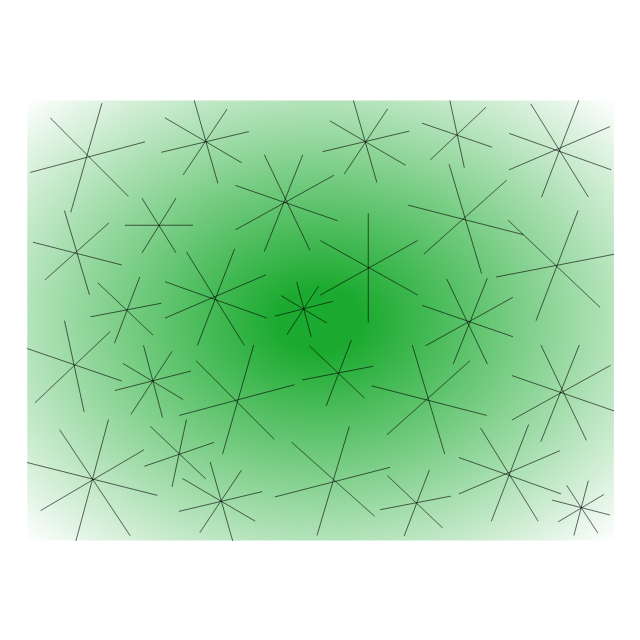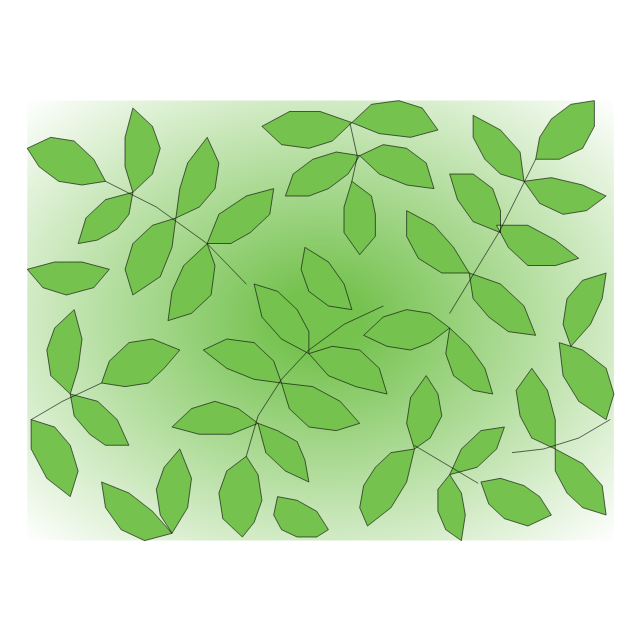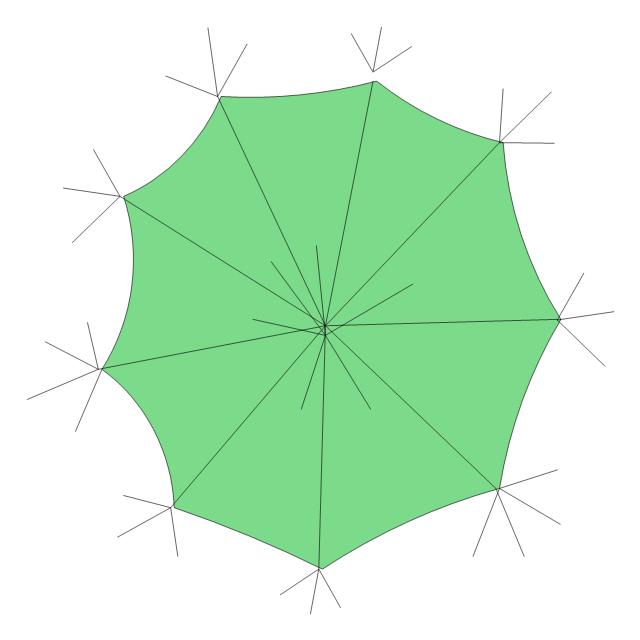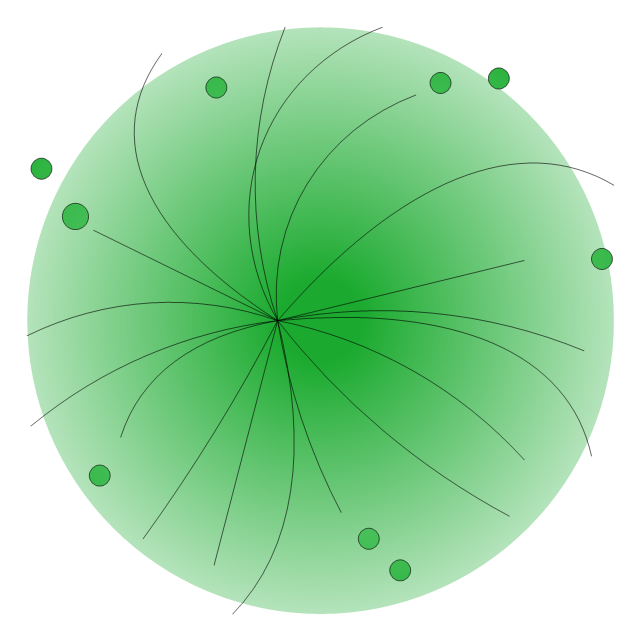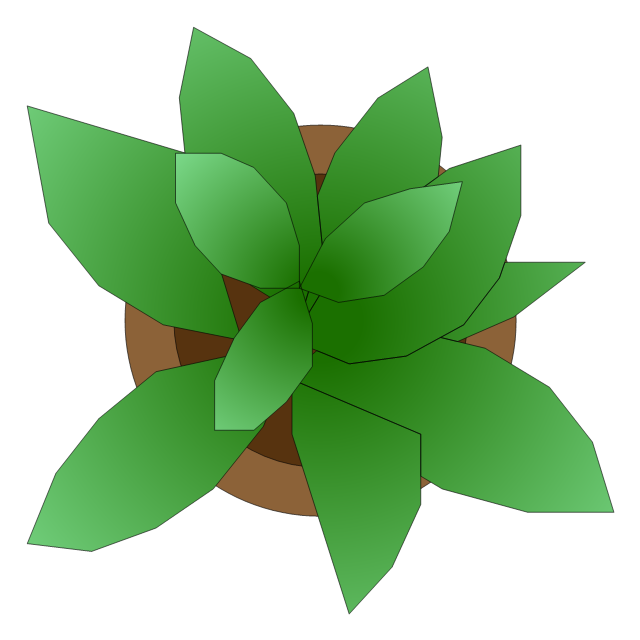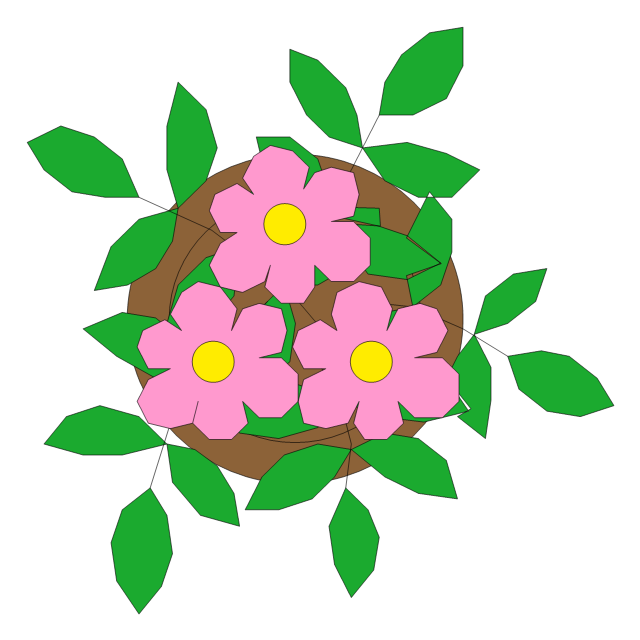The vector stencils library "Trees and plants" contains 29 symbols of trees, hedges, groundcovers, greenery, and shrubbery. Use these shapes for drawing your site plans, landscape architecture, lawns, gardens, yards, parks planning, groundskeeping, landscape design, and arboretums in the ConceptDraw PRO diagramming and vector drawing software extended with the Site Plans solution from the Building Plans area of ConceptDraw Solution Park.
"Baseball is played between two teams with nine players in the field on each team. On a baseball field, the game is under authority of several umpires. There are usually four umpires in major league games; up to six (and as few as one) may officiate depending on the league and the importance of the game. There are four bases. Numbered counterclockwise, first, second and third bases are cushions (sometimes informally referred to as bags) shaped as 15 in (38 cm) squares which are raised a short distance above the ground; together with home plate, the fourth "base," they form a square with sides of 90 ft (27.4 m) called the diamond. Home base (usually called home plate) is a pentagonal rubber slab 17 in (43.2 cm) wide. The playing field is divided into three main sections:
(1) The infield, containing the four bases, is for general defensive purposes bounded by the foul lines and within the grass line (see figure).
(2) The outfield is the grassed area beyond the infield grass line between the foul lines, and bounded by a wall or fence.
(3) Foul territory is the entire area outside the foul lines.
The pitcher's mound is located in the center of the infield. It is an 18 ft (5.5 m) diameter mound of dirt no higher than 10 in (25.4 cm). Near the center of the mound is the pitching rubber, a rubber slab positioned 60 ft 6 in (18.4 m) from home plate. The pitcher must have one foot on the rubber at the start of every pitch to a batter, but the pitcher may leave the mound area once the ball is released." [Baseball rules. Wikipedia]
The baseball positions diagram example "Corner view baseball field" was created using the ConceptDraw PRO diagramming and vector drawing software extended with the Baseball solution from the Sport area of ConceptDraw Solution Park.
(1) The infield, containing the four bases, is for general defensive purposes bounded by the foul lines and within the grass line (see figure).
(2) The outfield is the grassed area beyond the infield grass line between the foul lines, and bounded by a wall or fence.
(3) Foul territory is the entire area outside the foul lines.
The pitcher's mound is located in the center of the infield. It is an 18 ft (5.5 m) diameter mound of dirt no higher than 10 in (25.4 cm). Near the center of the mound is the pitching rubber, a rubber slab positioned 60 ft 6 in (18.4 m) from home plate. The pitcher must have one foot on the rubber at the start of every pitch to a batter, but the pitcher may leave the mound area once the ball is released." [Baseball rules. Wikipedia]
The baseball positions diagram example "Corner view baseball field" was created using the ConceptDraw PRO diagramming and vector drawing software extended with the Baseball solution from the Sport area of ConceptDraw Solution Park.
"Fielding Drill #2: Hit the Cutoff.
The main purpose of this drill is to work on getting the ball from the outfield into the infield.
How it Works:
This drill requires a fielder at second, at third, a catcher, a cutoff man, and outfielders.
The coach will begin the drill by hitting the ball (in the air or on the ground) to the outfielder. The outfielder will field the ball and throw the ball on a line to the cutoff man (the ball should be aimed at the cutoff’s head). The cutoff should go out to the outfield grass and line-up between home and the outfielder."
[baseball-tutorials.com/ baseball-fielding-drills/ ]
The baseball positions diagram example "Baseball fielding drill - Hit the cutoff" was created using the ConceptDraw PRO diagramming and vector drawing software extended with the Baseball solution from the Sport area of ConceptDraw Solution Park.
The main purpose of this drill is to work on getting the ball from the outfield into the infield.
How it Works:
This drill requires a fielder at second, at third, a catcher, a cutoff man, and outfielders.
The coach will begin the drill by hitting the ball (in the air or on the ground) to the outfielder. The outfielder will field the ball and throw the ball on a line to the cutoff man (the ball should be aimed at the cutoff’s head). The cutoff should go out to the outfield grass and line-up between home and the outfielder."
[baseball-tutorials.com/ baseball-fielding-drills/ ]
The baseball positions diagram example "Baseball fielding drill - Hit the cutoff" was created using the ConceptDraw PRO diagramming and vector drawing software extended with the Baseball solution from the Sport area of ConceptDraw Solution Park.
- Ground Covers And Grasses Symbols
- Trees and plants - Vector stencils library | Interior Design. Site Plan ...
- Trees and plants - Vector stencils library | Interior Design Site Plan ...
- Architectural Ground Cover Symbols
- Ground Cover Symbol
- Drawing Of Ground Covers
- Trees and plants - Vector stencils library | Cafe and Restaurant Floor ...
- Interior Design Site Plan - Design Elements | Trees and plants ...
- Store Layout Software | Buildings and green spaces - Vector stencils ...
- Design elements - Trees and plants | Landscape Plan | Bubble ...
- Architectural Symbols For Grass
- Architectural Grass Symbols
- Site Plan Ground Cover
- Soccer (Football) Positions | Basketball Field in the Vector | Soccer ...
- Design elements - Trees and plants | Interior Design Site Plan ...
- Baseball Ground Diagram
- How to Draw a Landscape Design Plan | Design elements - Flowers ...
- Baseball positions - Vector stencils library | Corner view baseball ...
- Landscape Grass Symbols
- Corner view baseball field | Short Foot Ground Diagram
